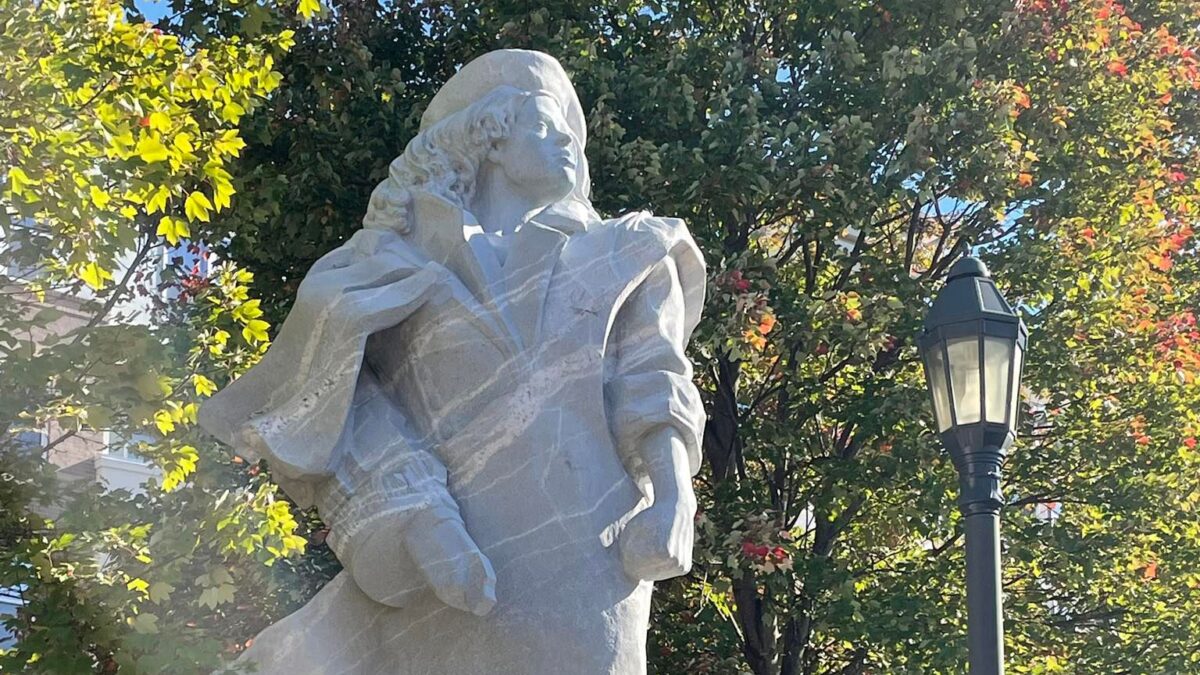Over the weekend, a new statue was added to Atlanta’s Peace Park, located next to one of the city’s most well-known and beautiful monuments, the Millennium Gate. This larger-than-life statue, erected by a grassroots effort of Americans who fled Communism and their descendants, will depict a defiant woman holding a gun and pays homage to the brave freedom fighters of the 1956 Hungarian Revolution.
Although many young Americans remain unaware of the 1956 revolution, this statue aims not only to remind them of this important historical event that shaped global politics and a whole generation of Americans’ view of the true nature of totalitarianism but also serves as a condemnation of communism and Marxist ideology, both of which are becoming increasingly popular on college campuses.
The 1956 revolution, which lasted from Oct. 23 to Nov. 4, was the greatest direct challenge to Soviet control of its European satellites until the fall of communism in 1989. In the decade preceding the revolution, Hungary had seen its democracy abolished, and by 1956, the Hungarians had experienced one of the worst Stalinist-style governance whose abuses ranged from deportations and imprisonments to executions and torture.
Under this brutal system, every characteristic of the Hungarian nation from its spirit of entrepreneurship, religiosity, and Western consciousness was actively repressed by their government. Despite their totalitarian control over the Hungarian state and society, the communists did not foresee the events that would unfold in October of 1956.
Inspired by recent protests in Poland, Hungarian students first began demanding independent student unions at their universities. This quickly escalated into street demonstrations and a list of demands for the government began appearing from the crowd. Hungarians of all social classes and backgrounds joined the movement, and Budapest and other large Hungarian cities and towns were gripped by widespread protests and demonstrations. Initially, the revolution appeared to have been successful when the Soviet Army left Budapest and Hungary’s reformist prime minister acquiesced to many of the protesters’ demands.
On Nov. 3, however, the Soviet Army returned and engaged in street fighting with the protesters, sealing the fate of the revolution. Despite fierce resistance, the revolutionaries were crushed, and Hungary was once again forced to serve as a Soviet Vassal. It was not until 1989, that Hungarians would be able to free themselves successfully of the Soviet yoke.
Although Radio Free Europe encouraged the freedom-minded Hungarians to revolt against communist rule, the United States did not play a direct role in helping the revolutionaries. Eisenhower, while expressing support for the Hungarians in spirit, was adamantly against any military or financial aid to the freedom fighters.
In the aftermath of the 1956 revolution, tens of thousands of Hungarian refugees found a new home in the United States and have provided invaluable contributions to the tapestry of modern-day America. The statue itself is erected by the Hungarian American Coalition with the support of patriotic Americans, ’56ers, and children of the revolutionaries to remind Americans of the courage it takes to defend one’s freedom.
For this warning, they could not have picked a more striking image. The woman depicted by the statue is from a well-known photograph from the 1956 revolution. Although her image is known more than her name, the freedom fighter was Erika Szeles, a Jewish Hungarian who lost her father during the Second World War. Despite coming from an ardently communist family, she decisively rejected the ideology when she decided to join the uprising at the age of 15. Although in the first few days of the uprising she learned how to handle a gun (it was at this time the famous photograph was taken) the revolutionaries decided she was too young to fight, and she instead helped the revolution by joining the Red Cross.
Working as a medic, however, did not save her from communist retribution, and on Nov. 7 she was gunned down despite clearly wearing the Red Cross uniform. Although she died as a martyr for Hungarian freedom and independence, through her striking photograph Erika’s spirit lives on to this day.
It is her spirit of grace, grit, and perseverance, which, through this statue, will now stand against the current iconoclastic fervor that has brought down scores of monuments representing American history. Hungarian Americans are teaching us a lesson they know all too well. America’s current obsession with historical self-destruction, after all, is something the ’56ers saw firsthand when the Soviet tanks rolled into Budapest and set out to rewrite Hungarian history. During the communist takeover of Hungary, countless statues, parks, and monuments were demolished due to their political incompatibility with Soviet ideology. Streets and squares were renamed, and Hungary’s right to its own national heritage was officially denied.
It is therefore not a coincidence that after the great wave of monument destruction, it is the Hungarian Americans who have chosen, once again, to swim against the tide. Their statue will be our statue and serve as a reminder that American ideals of liberty and independence resonate around the world and inspire peoples who live in tyranny everywhere.
The new Freedom Fighter statue in Georgia will be a reminder that rejecting tradition, history, and national identity in favor of utopia costs lives. It is exactly the lesson that is needed in our present times.
Americans must realize that not only must we stop whitewashing our own history through the destruction of our statues, monuments, and memorials, but we must reverse this trend by constructing positive tributes to those who represent our nation and the transnational ideas of liberty and freedom.









